DIY Alcohol Cleaners: Unlock the secrets to a sparkling home with the power of rubbing alcohol! Are you tired of harsh chemicals and expensive cleaning products that promise the world but deliver little? I know I was! That’s why I dove headfirst into the world of DIY cleaning solutions, and let me tell you, the results have been amazing.
For generations, resourceful individuals have sought natural and effective ways to maintain their homes. From ancient herbal remedies to time-tested vinegar solutions, the quest for a clean and healthy living space is deeply ingrained in our history. Today, we’re tapping into that same spirit of ingenuity with a modern twist: DIY alcohol cleaners.
But why alcohol? Well, rubbing alcohol (isopropyl alcohol) is a fantastic disinfectant, degreaser, and all-around cleaning powerhouse. It’s readily available, relatively inexpensive, and incredibly versatile. In this article, I’m going to share my favorite DIY alcohol cleaner recipes and hacks that will not only save you money but also reduce your exposure to harmful chemicals. From tackling stubborn stains to sanitizing surfaces, these simple solutions will transform your cleaning routine. Get ready to discover the magic of DIY alcohol cleaners and create a healthier, happier home!
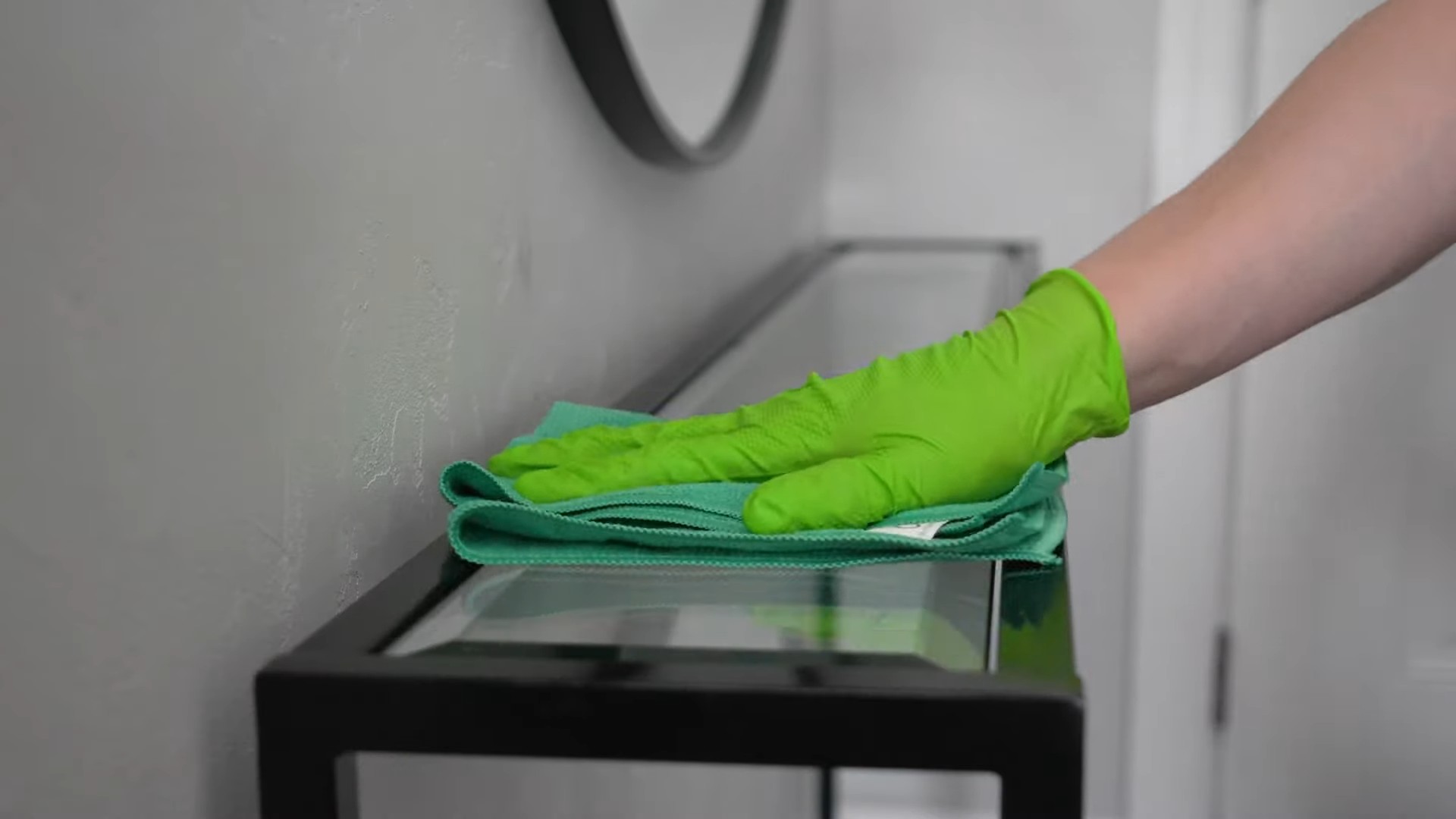
DIY Alcohol Cleaners: Your Guide to Sparkling Clean, Naturally!
Hey there, fellow DIY enthusiasts! I’m so excited to share my favorite recipes for alcohol-based cleaners. They’re incredibly effective, budget-friendly, and a fantastic way to reduce your reliance on harsh chemicals. Let’s dive in and get cleaning!
Why Alcohol?
Before we jump into the recipes, let’s talk about why alcohol is such a cleaning superstar. Isopropyl alcohol (also known as rubbing alcohol) is a fantastic disinfectant, killing germs and bacteria on contact. It evaporates quickly, leaving surfaces streak-free and shiny. Plus, it’s a great solvent, meaning it can dissolve grease, grime, and other stubborn messes.
Important Safety Note: Always use alcohol in a well-ventilated area. Avoid contact with skin and eyes. Keep out of reach of children and pets. Never mix alcohol with bleach, as this can create toxic fumes.
Choosing Your Alcohol: Isopropyl vs. Ethanol
You’ll typically find two types of alcohol suitable for cleaning:
* Isopropyl Alcohol (Rubbing Alcohol): This is the most common and readily available option. Look for a concentration of 70% or higher for effective disinfection. I usually opt for 91% when I can find it.
* Ethanol (Grain Alcohol): This is a more natural option, often derived from corn or other grains. It’s generally considered safer than isopropyl alcohol, but it can be more expensive and harder to find. If you’re using ethanol, make sure it’s denatured (meaning it has additives that make it undrinkable).
For these recipes, I’ll be focusing on isopropyl alcohol, as it’s the most accessible.
General Supplies You’ll Need
Before we get started, gather these essential supplies:
* Spray bottles (glass or plastic)
* Measuring cups and spoons
* Funnel (for easy pouring)
* Essential oils (optional, for scent)
* Distilled water (for dilution)
* Microfiber cloths (for cleaning)
* Labels (to clearly mark your bottles)
* Isopropyl alcohol (70% or 91%)
Recipe 1: All-Purpose Alcohol Cleaner
This is my go-to cleaner for almost everything! It’s perfect for countertops, sinks, bathroom fixtures, and even glass surfaces.
Ingredients:
* 1 cup isopropyl alcohol (70% or 91%)
* 1 cup distilled water
* 10-20 drops of your favorite essential oil (optional)
Instructions:
1. Combine Ingredients: In a spray bottle, combine the isopropyl alcohol and distilled water.
2. Add Essential Oils (Optional): If you’re using essential oils, add them to the mixture. I love using lemon, lavender, or tea tree oil for their cleaning and disinfecting properties.
3. Shake Well: Secure the spray nozzle and shake the bottle well to combine all the ingredients.
4. Label Your Bottle: Clearly label the bottle as “All-Purpose Alcohol Cleaner” and include the date.
5. To Use: Spray the cleaner onto the surface you want to clean. Let it sit for a few seconds to disinfect, then wipe clean with a microfiber cloth.
Recipe 2: Glass and Mirror Cleaner
Say goodbye to streaks with this simple yet effective glass cleaner!
Ingredients:
* 1/2 cup isopropyl alcohol (70% or 91%)
* 1/2 cup distilled water
* 1 tablespoon white vinegar (optional, for extra cleaning power)
Instructions:
1. Combine Ingredients: In a spray bottle, combine the isopropyl alcohol, distilled water, and white vinegar (if using).
2. Shake Well: Secure the spray nozzle and shake the bottle well to combine all the ingredients.
3. Label Your Bottle: Clearly label the bottle as “Glass Cleaner” and include the date.
4. To Use: Spray the cleaner onto the glass or mirror surface. Wipe clean with a microfiber cloth or newspaper for a streak-free shine.
Recipe 3: Disinfecting Wipes
These homemade disinfecting wipes are perfect for quick cleanups and sanitizing surfaces on the go.
Supplies:
* Roll of paper towels (select-a-size is best)
* Container with a lid (an old wipes container works great)
* 1 cup isopropyl alcohol (70% or 91%)
* 1 cup distilled water
* 1 tablespoon dish soap (optional, for extra cleaning power)
Instructions:
1. Prepare the Paper Towels: Cut the roll of paper towels in half with a serrated knife. Remove the cardboard core from the center of one half.
2. Combine the Cleaning Solution: In a bowl, combine the isopropyl alcohol, distilled water, and dish soap (if using).
3. Soak the Paper Towels: Place the paper towel roll into the container. Pour the cleaning solution over the paper towels, making sure they are evenly saturated.
4. Pull from the Center: Pull a sheet from the center of the roll to start using the wipes.
5. Label Your Container: Clearly label the container as “Disinfecting Wipes” and include the date.
6. To Use: Pull out a wipe and use it to clean and disinfect surfaces. Discard the wipe after use.
Recipe 4: Electronics Cleaner
Keep your screens and devices clean and germ-free with this gentle cleaner.
Important Note: Always turn off and unplug electronics before cleaning. Never spray cleaner directly onto electronics.
Ingredients:
* 1/2 cup isopropyl alcohol (70%)
* 1/2 cup distilled water
Instructions:
1. Combine Ingredients: In a spray bottle, combine the isopropyl alcohol and distilled water.
2. Shake Well: Secure the spray nozzle and shake the bottle well to combine all the ingredients.
3. Label Your Bottle: Clearly label the bottle as “Electronics Cleaner” and include the date.
4. To Use: Lightly spray the cleaner onto a microfiber cloth. Gently wipe the screen or device surface. Allow to air dry completely before turning on the device.
Recipe 5: Hand Sanitizer
While not a direct “cleaner,” hand sanitizer is essential for keeping germs at bay.
Important Note: This recipe is for informational purposes only. The effectiveness of homemade hand sanitizer may vary. Always follow CDC guidelines for hand hygiene.
Ingredients:
* 2/3 cup isopropyl alcohol (91% or higher)
* 1/3 cup aloe vera gel
* Few drops of essential oil (optional, for scent)
Instructions:
1. Combine Ingredients: In a bowl, combine the isopropyl alcohol and
Hey there, fellow DIY enthusiasts! I’m so excited to share my favorite recipes for alcohol-based cleaners. They’re incredibly effective, budget-friendly, and a fantastic way to reduce your reliance on harsh chemicals. Let’s dive in and get cleaning!
Why Alcohol?
Before we jump into the recipes, let’s talk about why alcohol is such a cleaning superstar. Isopropyl alcohol (also known as rubbing alcohol) is a fantastic disinfectant, killing germs and bacteria on contact. It evaporates quickly, leaving surfaces streak-free and shiny. Plus, it’s a great solvent, meaning it can dissolve grease, grime, and other stubborn messes.
Important Safety Note: Always use alcohol in a well-ventilated area. Avoid contact with skin and eyes. Keep out of reach of children and pets. Never mix alcohol with bleach, as this can create toxic fumes.
Choosing Your Alcohol: Isopropyl vs. Ethanol
You’ll typically find two types of alcohol suitable for cleaning:
* Isopropyl Alcohol (Rubbing Alcohol): This is the most common and readily available option. Look for a concentration of 70% or higher for effective disinfection. I usually opt for 91% when I can find it.
* Ethanol (Grain Alcohol): This is a more natural option, often derived from corn or other grains. It’s generally considered safer than isopropyl alcohol, but it can be more expensive and harder to find. If you’re using ethanol, make sure it’s denatured (meaning it has additives that make it undrinkable).
For these recipes, I’ll be focusing on isopropyl alcohol, as it’s the most accessible.
General Supplies You’ll Need
Before we get started, gather these essential supplies:
* Spray bottles (glass or plastic)
* Measuring cups and spoons
* Funnel (for easy pouring)
* Essential oils (optional, for scent)
* Distilled water (for dilution)
* Microfiber cloths (for cleaning)
* Labels (to clearly mark your bottles)
* Isopropyl alcohol (70% or 91%)
Recipe 1: All-Purpose Alcohol Cleaner
This is my go-to cleaner for almost everything! It’s perfect for countertops, sinks, bathroom fixtures, and even glass surfaces.
Ingredients:
* 1 cup isopropyl alcohol (70% or 91%)
* 1 cup distilled water
* 10-20 drops of your favorite essential oil (optional)
Instructions:
1. Combine Ingredients: In a spray bottle, combine the isopropyl alcohol and distilled water.
2. Add Essential Oils (Optional): If you’re using essential oils, add them to the mixture. I love using lemon, lavender, or tea tree oil for their cleaning and disinfecting properties.
3. Shake Well: Secure the spray nozzle and shake the bottle well to combine all the ingredients.
4. Label Your Bottle: Clearly label the bottle as “All-Purpose Alcohol Cleaner” and include the date.
5. To Use: Spray the cleaner onto the surface you want to clean. Let it sit for a few seconds to disinfect, then wipe clean with a microfiber cloth.
Recipe 2: Glass and Mirror Cleaner
Say goodbye to streaks with this simple yet effective glass cleaner!
Ingredients:
* 1/2 cup isopropyl alcohol (70% or 91%)
* 1/2 cup distilled water
* 1 tablespoon white vinegar (optional, for extra cleaning power)
Instructions:
1. Combine Ingredients: In a spray bottle, combine the isopropyl alcohol, distilled water, and white vinegar (if using).
2. Shake Well: Secure the spray nozzle and shake the bottle well to combine all the ingredients.
3. Label Your Bottle: Clearly label the bottle as “Glass Cleaner” and include the date.
4. To Use: Spray the cleaner onto the glass or mirror surface. Wipe clean with a microfiber cloth or newspaper for a streak-free shine.
Recipe 3: Disinfecting Wipes
These homemade disinfecting wipes are perfect for quick cleanups and sanitizing surfaces on the go.
Supplies:
* Roll of paper towels (select-a-size is best)
* Container with a lid (an old wipes container works great)
* 1 cup isopropyl alcohol (70% or 91%)
* 1 cup distilled water
* 1 tablespoon dish soap (optional, for extra cleaning power)
Instructions:
1. Prepare the Paper Towels: Cut the roll of paper towels in half with a serrated knife. Remove the cardboard core from the center of one half.
2. Combine the Cleaning Solution: In a bowl, combine the isopropyl alcohol, distilled water, and dish soap (if using).
3. Soak the Paper Towels: Place the paper towel roll into the container. Pour the cleaning solution over the paper towels, making sure they are evenly saturated.
4. Pull from the Center: Pull a sheet from the center of the roll to start using the wipes.
5. Label Your Container: Clearly label the container as “Disinfecting Wipes” and include the date.
6. To Use: Pull out a wipe and use it to clean and disinfect surfaces. Discard the wipe after use.
Recipe 4: Electronics Cleaner
Keep your screens and devices clean and germ-free with this gentle cleaner.
Important Note: Always turn off and unplug electronics before cleaning. Never spray cleaner directly onto electronics.
Ingredients:
* 1/2 cup isopropyl alcohol (70%)
* 1/2 cup distilled water
Instructions:
1. Combine Ingredients: In a spray bottle, combine the isopropyl alcohol and distilled water.
2. Shake Well: Secure the spray nozzle and shake the bottle well to combine all the ingredients.
3. Label Your Bottle: Clearly label the bottle as “Electronics Cleaner” and include the date.
4. To Use: Lightly spray the cleaner onto a microfiber cloth. Gently wipe the screen or device surface. Allow to air dry completely before turning on the device.
Recipe 5: Hand Sanitizer
While not a direct “cleaner,” hand sanitizer is essential for keeping germs at bay.
Important Note: This recipe is for informational purposes only. The effectiveness of homemade hand sanitizer may vary. Always follow CDC guidelines for hand hygiene.
Ingredients:
* 2/3 cup isopropyl alcohol (91% or higher)
* 1/3 cup aloe vera gel
* Few drops of essential oil (optional, for scent)
Instructions:
1. Combine Ingredients: In a bowl, combine the isopropyl alcohol and aloe vera gel.
2. Add Essential Oils (Optional): If you’re using essential oils, add them to the mixture.
3. Mix Well: Stir the ingredients together until well combined.
4. Transfer to a Bottle: Pour the mixture into a small, portable bottle.
5. Label Your Bottle: Clearly label the bottle as “Hand Sanitizer” and include the date.
6. To Use: Apply a small amount of hand sanitizer to your hands and rub them together until dry.
Tips for Success
* Always test in an inconspicuous area first: Before using any of these cleaners on a large surface, test it on a small, hidden area to ensure it doesn’t damage the material.
* Use distilled water: Distilled water is free of minerals and impurities, which can leave streaks or residue.
* Store your cleaners properly: Store your homemade cleaners in a cool, dark place away from direct sunlight.
* Use high-quality essential oils: If you’re using essential oils, choose high-quality, therapeutic-grade oils for the best results.
* Adjust the recipes to your liking: Feel free to experiment with different essential oil combinations or adjust the ratios of alcohol and water to suit your needs.
* Be mindful of the surfaces you’re cleaning: Alcohol can damage certain surfaces, such as painted wood or some plastics. Always check the manufacturer’s instructions before using alcohol-based cleaners.
* Ventilation is key: Always use these cleaners in a well-ventilated area to avoid inhaling fumes.
* Safety first: Keep all cleaning products out of reach of children and pets.
Troubleshooting
* Streaks: If you’re experiencing streaks, try using a clean microfiber cloth or newspaper to wipe the surface. You can also try diluting the cleaner with more water.
* Strong alcohol smell: If the alcohol smell is too strong, add more essential oils or dilute the cleaner with more water. The smell will dissipate quickly as the alcohol evaporates.
* Cloudy cleaner: If your cleaner is cloudy, it could be due
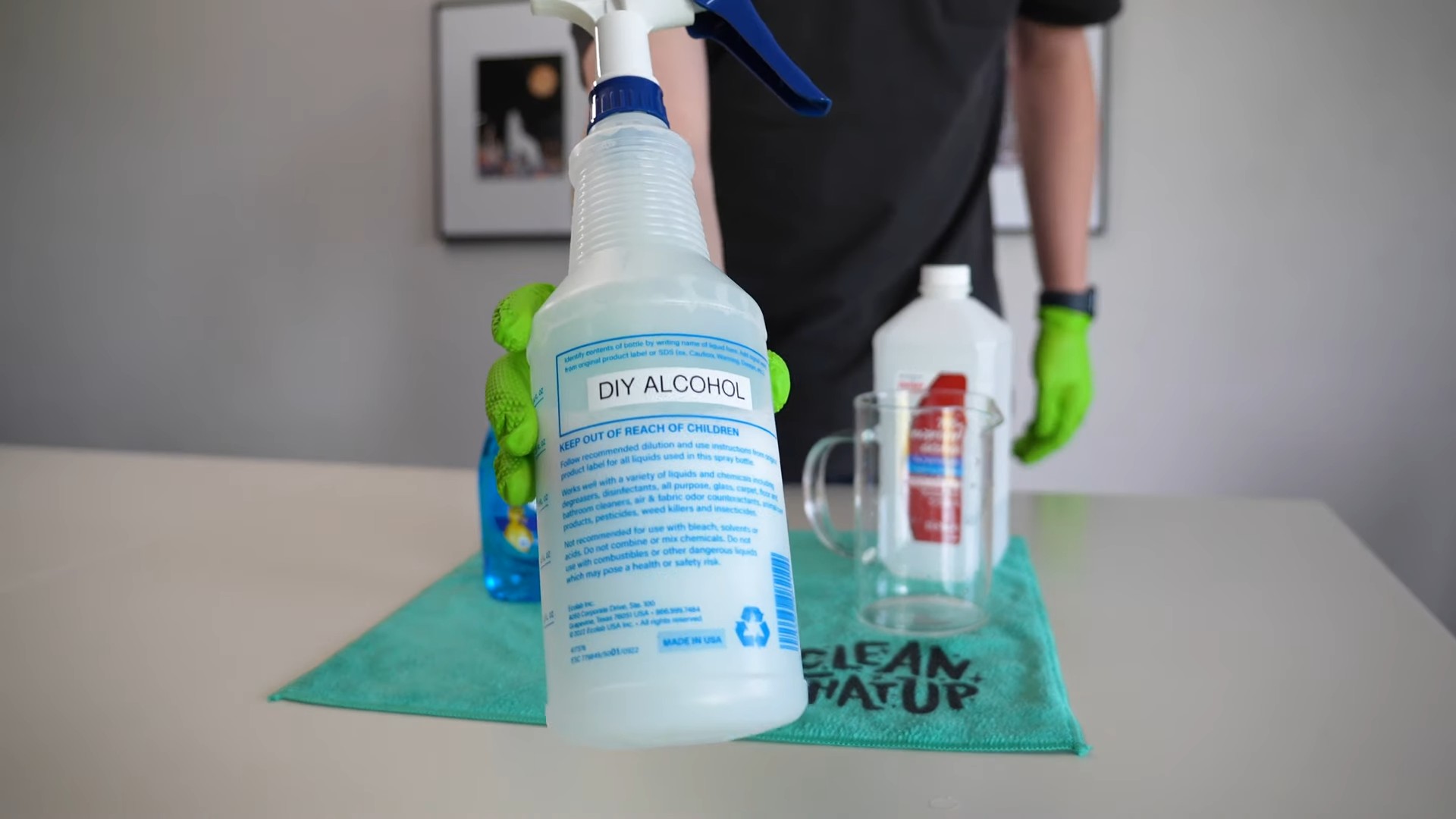
Conclusion
So, there you have it! Crafting your own DIY alcohol cleaners is not just a cost-effective alternative to store-bought options; it’s a customizable, eco-conscious, and surprisingly simple way to keep your home sparkling. We’ve explored the versatility of isopropyl alcohol and ethanol, highlighting their strengths in tackling various cleaning challenges, from disinfecting surfaces to banishing stubborn grime.
But why is this DIY approach a must-try? Firstly, you gain complete control over the ingredients. No more deciphering long lists of chemicals or worrying about hidden allergens. You know exactly what’s going into your cleaner, allowing you to tailor it to your specific needs and sensitivities. Secondly, it’s incredibly budget-friendly. A bottle of isopropyl alcohol goes a long way, and when combined with readily available ingredients like water, essential oils, or vinegar, you can create a range of effective cleaners for a fraction of the cost of commercial products. Thirdly, it’s an environmentally responsible choice. By reducing your reliance on plastic bottles and potentially harmful chemicals, you’re contributing to a healthier planet.
Looking for variations? Consider infusing your alcohol cleaner with citrus peels for a refreshing scent and added cleaning power. Lemon, orange, or grapefruit peels steeped in alcohol for a few days will release their natural oils, creating a potent and fragrant cleaner perfect for kitchen surfaces. For a more powerful disinfectant, especially for bathroom cleaning, add a small amount of hydrogen peroxide to your alcohol solution. Remember to always test any new cleaner on an inconspicuous area first to ensure it doesn’t damage the surface.
Another fantastic variation is to create a DIY alcohol-based hand sanitizer. In these times, having a reliable hand sanitizer is crucial. By combining isopropyl alcohol (at least 70% concentration) with aloe vera gel and a few drops of your favorite essential oil, you can create a moisturizing and effective hand sanitizer that’s gentle on your skin.
Don’t be afraid to experiment with different essential oil blends to create your signature scent. Lavender, tea tree, eucalyptus, and peppermint are all excellent choices for their antibacterial and antiviral properties, as well as their pleasant aromas. Just remember to use high-quality essential oils for the best results.
We encourage you to embrace the world of DIY alcohol cleaners and discover the satisfaction of creating your own effective and eco-friendly cleaning solutions. It’s a small change that can make a big difference, both for your wallet and for the environment.
Now, it’s your turn! Try out these recipes, experiment with different variations, and share your experiences with us. What are your favorite essential oil combinations? What surfaces have you found these cleaners to be most effective on? Let us know in the comments below! We’re eager to hear your tips and tricks for making the most of your DIY alcohol cleaning journey. Your insights could inspire others to ditch the store-bought cleaners and embrace the power of homemade solutions. Together, we can create a cleaner, healthier, and more sustainable future, one DIY alcohol cleaner at a time.
FAQ
What type of alcohol is best for cleaning?
The two most common types of alcohol used for cleaning are isopropyl alcohol (also known as rubbing alcohol) and ethanol (also known as ethyl alcohol or grain alcohol). Isopropyl alcohol is generally preferred for disinfecting due to its higher concentration and effectiveness against a wider range of germs. Ethanol is often used in hand sanitizers and can also be used for general cleaning, but it may be slightly less effective than isopropyl alcohol for certain applications. Always ensure the alcohol concentration is at least 70% for optimal disinfecting power.
Is it safe to use alcohol cleaners on all surfaces?
No, it’s not safe to use alcohol cleaners on all surfaces. Alcohol can damage certain materials, such as painted or varnished surfaces, some plastics, and natural stones like marble or granite. Always test the cleaner on an inconspicuous area first to ensure it doesn’t cause any discoloration, etching, or other damage. Avoid using alcohol cleaners on delicate fabrics or electronics, as they can also be harmed. For sensitive surfaces, consider using a diluted solution or a different type of cleaner altogether.
Can I mix alcohol with bleach for cleaning?
Never mix alcohol with bleach. This combination creates toxic and dangerous fumes that can cause serious respiratory problems, chemical burns, and even death. Bleach should only be mixed with water and used according to the manufacturer’s instructions. Mixing bleach with other cleaning agents, including ammonia, can also produce hazardous gases. Always prioritize safety when cleaning and avoid combining chemicals unless you are absolutely certain of their compatibility.
How do I store my DIY alcohol cleaners?
Store your DIY alcohol cleaners in a cool, dark place away from direct sunlight and heat sources. Use a clean, airtight container, preferably made of glass or durable plastic. Label the container clearly with the contents and the date it was made. Keep the cleaner out of reach of children and pets. If you’ve added essential oils, be aware that they can degrade over time, so it’s best to use the cleaner within a few months for optimal fragrance and effectiveness.
What essential oils are best to add to DIY alcohol cleaners?
Several essential oils offer both fragrance and antibacterial or antiviral properties, making them excellent additions to DIY alcohol cleaners. Some popular choices include:
* **Tea Tree Oil:** Known for its strong antibacterial, antiviral, and antifungal properties.
* **Lavender Oil:** Offers a calming scent and has antiseptic properties.
* **Eucalyptus Oil:** Provides a refreshing scent and has antiviral and antibacterial benefits.
* **Lemon Oil:** A natural degreaser with a bright, uplifting scent and antibacterial properties.
* **Peppermint Oil:** Has a refreshing scent and can help to deter pests.
When adding essential oils, start with a small amount (a few drops per cup of cleaner) and adjust to your preference. Always use high-quality, pure essential oils for the best results.
How can I make a DIY alcohol-based hand sanitizer?
To make a DIY alcohol-based hand sanitizer, you will need:
* Isopropyl alcohol (99% concentration) or Ethanol (95% concentration)
* Aloe vera gel (to moisturize)
* Optional: Essential oil for fragrance
The World Health Organization (WHO) recommends the following formula:
* 833 ml of 99.8% isopropyl alcohol (or 751.5 ml of 95% ethanol)
* 41.7 ml of hydrogen peroxide (3%)
* 14.5 ml of glycerol (98%)
* Add distilled or boiled cold water to bring the total volume to 1000 ml
If you are using 70% isopropyl alcohol, you will need to adjust the amount of alcohol accordingly to achieve a final concentration of at least 60% alcohol. Mix the ingredients thoroughly and store in a clean, airtight container. Remember that this is a simplified version and may not be as effective as commercially produced hand sanitizers. Always wash your hands with soap and water whenever possible.
How effective are DIY alcohol cleaners compared to commercial cleaners?
The effectiveness of DIY alcohol cleaners depends on the concentration of alcohol and the specific cleaning task. Alcohol is a powerful disinfectant and can effectively kill many types of bacteria, viruses, and fungi. However, it may not be as effective against certain types of pathogens or for removing heavy grime or grease. Commercial cleaners often contain additional ingredients, such as surfactants and detergents, that enhance their cleaning power. For general disinfecting and light cleaning, DIY alcohol cleaners can be a great option. For more challenging cleaning tasks, you may need to use a stronger commercial cleaner.
What safety precautions should I take when using DIY alcohol cleaners?
When using DIY alcohol cleaners, it’s important to take the following safety precautions:
* **Ventilation:** Use alcohol cleaners in a well-ventilated area to avoid inhaling fumes.
* **Skin Protection:** Wear gloves to protect your skin from irritation.
* **Eye Protection:** Wear safety glasses to prevent alcohol from splashing into your eyes.
* **Flammability:** Alcohol is flammable, so keep it away from open flames and heat sources.
* **Storage:** Store alcohol cleaners in a safe place, out of reach of children and pets.
* **Mixing:** Never mix alcohol with bleach or other incompatible chemicals.
By following these safety precautions, you can minimize the risks associated with using DIY alcohol cleaners and enjoy their benefits safely.


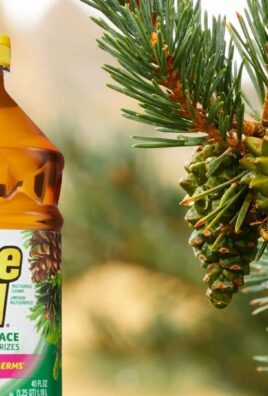
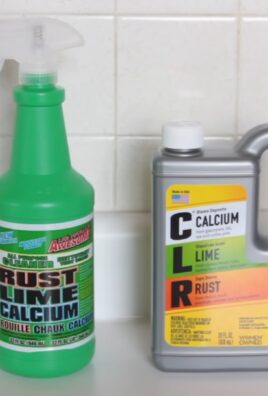
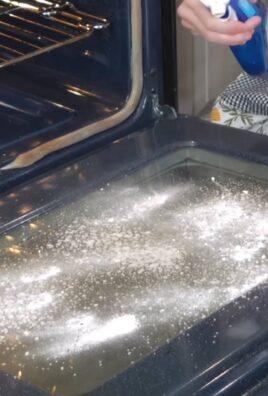
Leave a Comment